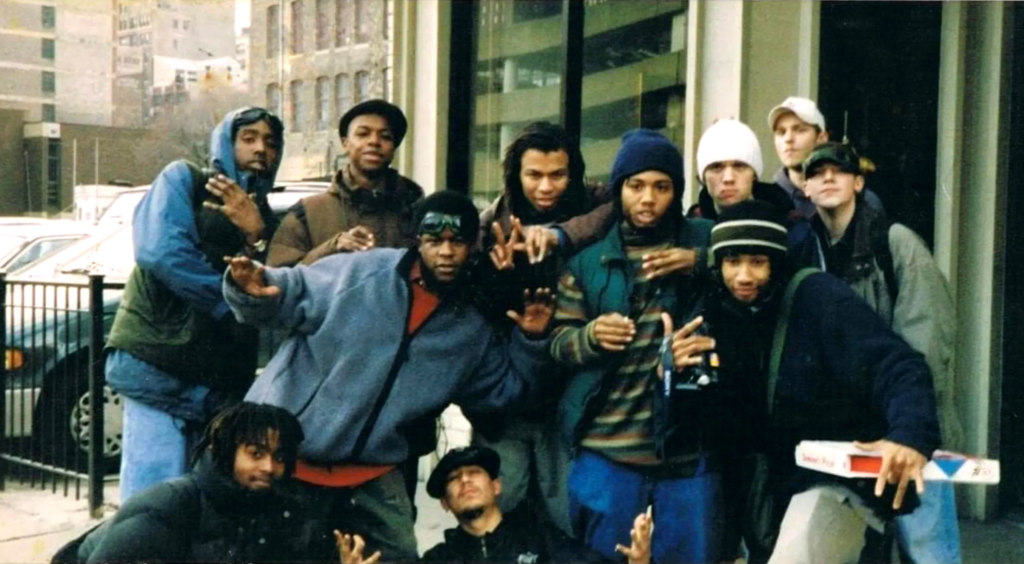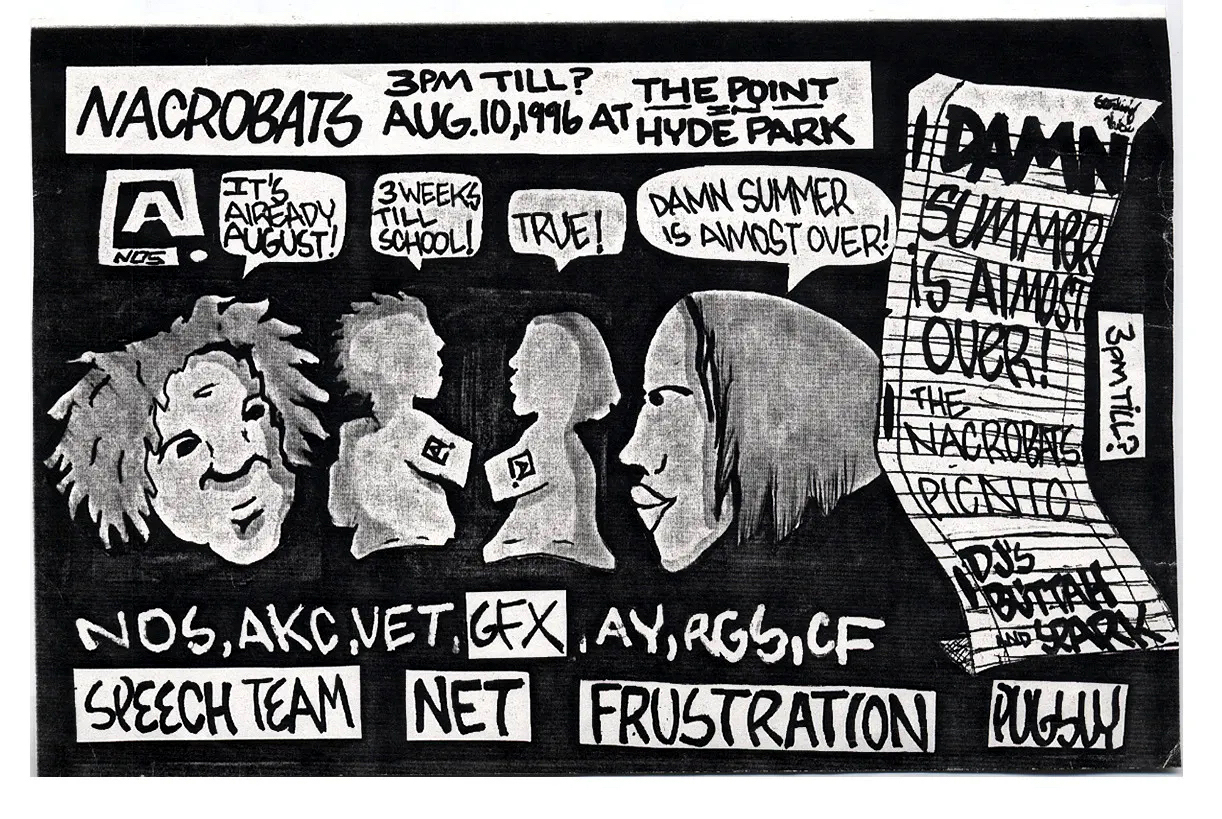When John Monopoly was thirteen, he’d throw parties and other events, lying about his age so he could line up South Side venues such as Hyde Park’s Blue Gargoyle Youth Services, a space founded by University of Chicago divinity students.
Monopoly, who later became the manager of Chicago hip-hop legend Kanye West and local fashion designers Don C and Virgil Abloh, told venue officials he was working on a class project.
“When I was getting these venues, I was always lying, to be honest,” said Monopoly. “I would always make up some kind of fictitious organization. It was always a finesse. I’d say: ‘I gotta do this thing for school, blah, blah, blah, and by the time it came over that some child had conned them, it was too late.”
The Blue Gargoyle, which closed in 2009, was one of the handful of spaces hosting generations of South Side teens who were hip-hop aficionados—breakdancing, graffiti writing, MCing, and DJing.
Other venues included Longwood Manor’s St. Margaret of Scotland Church, the South Shore Cultural Center, Hyde Park’s Promontory Point, and the United Church of Hyde Park.
“I think it was oftentimes easier for people to get access to facilities via their parents because it gave kids something ‘constructive’ to do,” said Jua Mitchell, a finance and accounting advisor for entertainment, e-commerce, and cannabis companies. “These parties back in those days, we were breakdancing and DJing—those were actual activities. It wasn’t a ‘party’ per se. I don’t think our parents thought it’s a party [laughs].”
Party promoters weren’t the only ones throwing these hip-hop parties. Euphonics, Nacrobats, 3993, and Ill Nature, among many other of those crews, cliques, and nations—including the Chicago chapter of Jack and Jill of America, Inc.—also did.
“Me and my mom would talk to people to convince their parents that it’d be cool—because they’re dropping their kids off to Englewood,” said Nacrobats MC Pugs Atomz, who said his first party was at Englewood’s Boulevard Arts Center. “You were desperate to find hip-hop at that time. The flier culture was so big back then; it was a competition who had the best fliers for their events.”
During the rise of Chicago’s hip-hop underground party scene, many teens in the South and West Sides believed they had to choose between hip-hop (a scene some viewed as homophobic and mysogynistic), house music, and gang culture.
“House was gay-friendly—hip-hop wasn’t,” said Mitchell. “The house scene was very inclusive, whereas hip-hop is the exact opposite way—very crew-based and competitive.”

Duane Powell, a house music DJ who grew up in Roseland, also saw the culture clash play out. He believes the impetus had to do with gay stereotypes of the genre and the lack of girls/women at hip-hop parties.
“It was definitely a thing,” said Powell. “A lot of people don’t realize that house culture, and its inception, was actually a revolutionary act that happened among the Black queer community because Chicago segregation kept them out of spaces.”
South Side native André Zachery, now artistic director of New York-based Renegade Performance Group, attended some of those parties, and he said those parties offered Black ownership of comfortable spaces.
“I don’t think people realize how liberatory that space was for us to have that experience,” said Zachery. “For those elders and parents to agree, they were saying: ‘We know that this is a necessary part of their development.’ ”
Why did the parties stop?
Euphonics member “The Architect” DJ Phonz says he saw a change in what partygoers wanted in terms of the music. This era existed in concurrence with the aftermath of the East Coast-West Coast beef that’s been blamed in the deaths of Tupac Shakur and the Notorious B.I.G.
“I saw a shift when people were coming back from college, getting jobs and wanting to show off what they have,” said Phonz. “This new era forced DJs to play new music in order to get booked for shows.”
South Side-based rapper Ang13 grew up in Rogers Park and says she attended parties all over the city.
“It was important for young Black kids to have those spaces because everyone didn’t like house—or gangs,” said Ang13. “S***, [the parties] kept us out of gangs; it gave us a pass from gangbangers who would say: ‘Oh, he/she on that rap s***. They cool, let him/her through.’ ”
A version of this story was originally published in the Sun-Times on March 31. It has been edited for length.
Evan F. Moore covers culture and entertainment for the Sun-Times. He was born and raised in South Shore. He last wrote for the Weekly about the lack of local AAU basketball recruitment.



